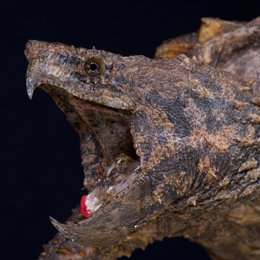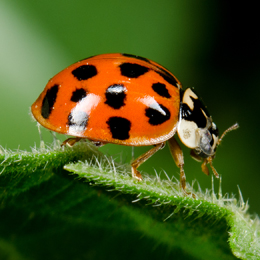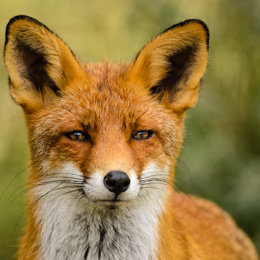Description
The ferruginous hawk or Buteo regalis is a large, brown colored, species of hawk, belonging to the family Accipitridae. They are only found in Western North America and are known by several different names like squirrel hawk, gopher hawk or eagle hawk. They are sometimes referred to as the ferruginous rough-leg, as they closely resemble the rough-legged buzzard, also found in North America.
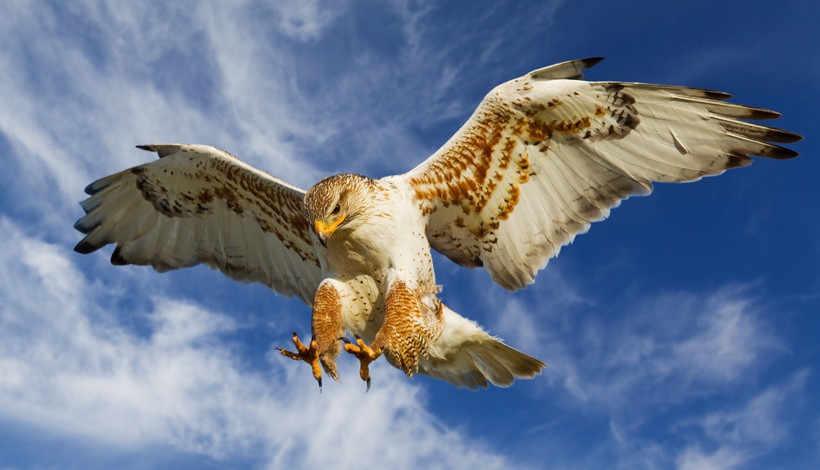
Ferruginous hawks can have a wingspan of up to 1.5 meters
?
Image credits: Stephen Mcsweeny/Shutterstock
Males and females of this species are quite similar to each other; the markings on their body are also identical, but the females grow larger than the males. The ferruginous hawks can be easily distinguished from other hawks due to its size. They can have a wingspan of up to 1.5 meters and when they fly, their rusty legs form a ‘V’ shape underneath its body. The wings and feathers are rusty in color while the body has white feathers with rusty markings on them.
Bird-watchers make use of these factors in order to identify easily a ferruginous hawk. They are strong and lightweight predators, with most individuals weighing close to one kilogram only. In the wild, ferruginous hawks live for up to 15-20 years.
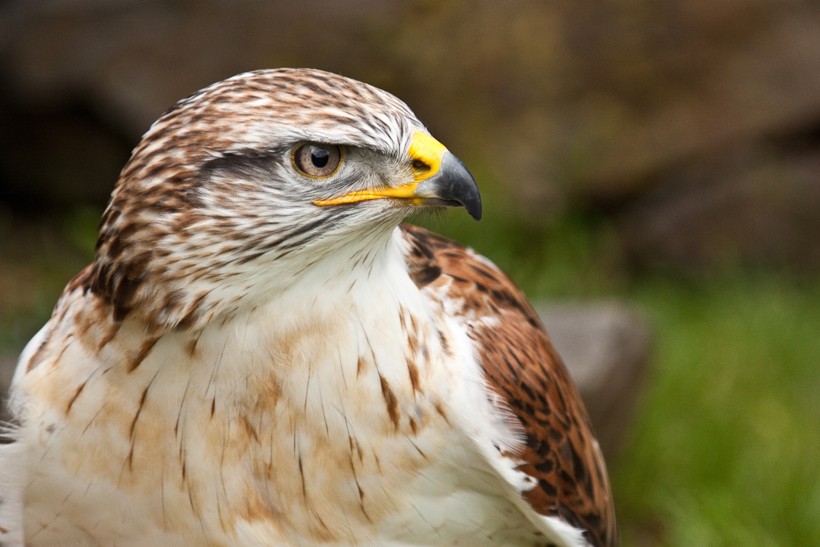
Ferruginous hawks are the heaviest of all hawks.
?
Image credits: Jearu/Shutterstock
Ferruginous hawks are found only in the grasslands of North America and no subspecies have been spotted so far. In some regions, the hawks are darker in color, with a combination of dark brown and black colored feathers on their body. After research, it was concluded that there were no major differences between the two types apart from the slight change in color. Hence, both types are considered to be the same species, named Buteo regalis.
Habitat & Diet
Buteo regalis inhabits grasslands and open plains of western North America. This species is endemic to this region and cannot be found anywhere else on earth. They prefer open fields as it gives an upper edge to the hawk against its prey. It can scan a larger area and spot out any vulnerable squirrel or gopher wandering in the region. They are also found in shallow canyons but the ferruginous hawk likes to stay in an open environment. They do not prefer cliff regions, high elevations or forest interiors, due to low availability of its prey in such habitats.
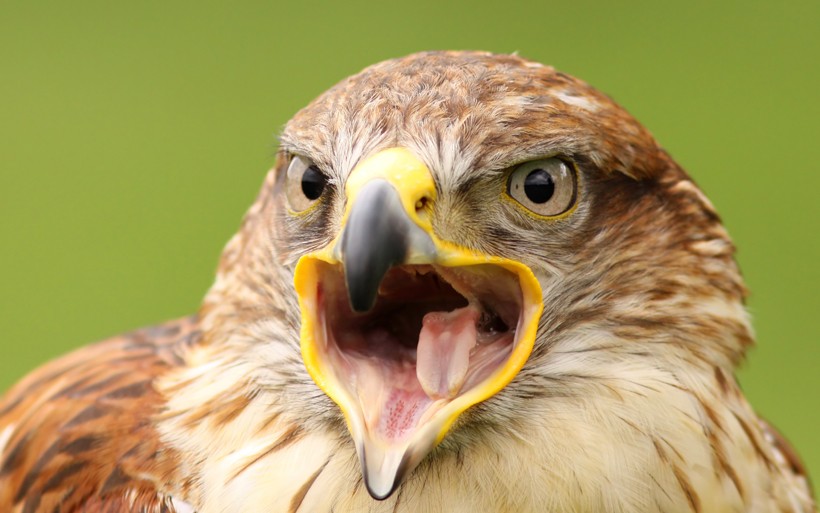
Ferruginous hawks prefer open fields were they can easily spot vulnerable preys
?
Image credits: Henk Bentlage/Shutterstock
The ferruginous hawks especially prefer open grasslands and shrublands during the breeding season. During this season, the density of population increases in grasslands. The nesting occurs at a maximum distance of only 1-4 miles.
Ferruginous hawks depend on several different hunting techniques to catch prey. Soaring high, flying low or diving from tall perches, they simply spot the prey and go for it. Sometimes, they quietly wait at the entrance of rodent burrows for an unsuspecting rodent to put his nose out. They frequently feed on squirrels, rats, gophers, snakes and birds, but a large portion of its diet consists of prairie dogs. These hawks are adaptable survivors and their diet can vary according to the habitat conditions.
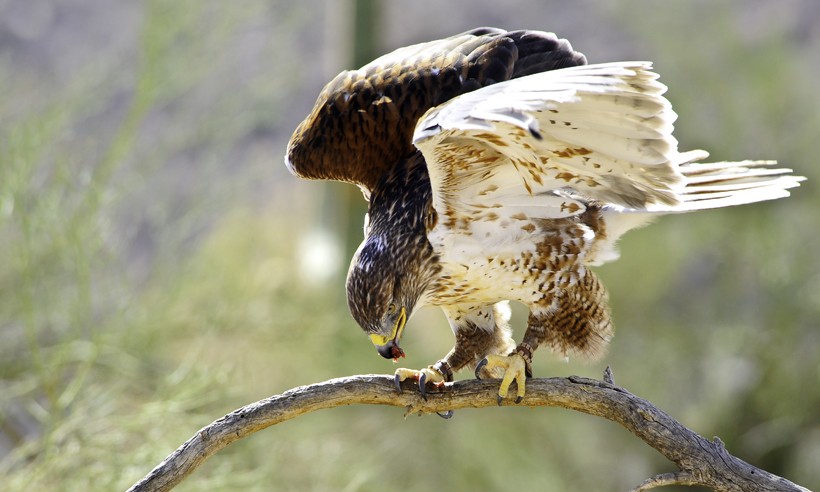
Ferruginous hawk eating on a branch
?
Image credits: Don Flink/Shutterstock
Due to its size, attitude and formidable hunting skills, the ferruginous hawk becomes one of the toughest competitors for other raptors that share its habitat. Constant conflicts arise concerning food, nesting sites and territories. Large birds like eagles and great horned owls, intimidate the ferruginous hawk regularly to steal food and territory. Golden eagles have a fierce reputation as they are known to kill ferruginous hawks that intrude their territory.
Reproduction and Life Cycle
Male and female ferruginous hawks can only be seen together during the breeding season, ranging between March and June. Males find a female and maintain the same mate throughout their lives. Once the pair chooses a suitable spot for building the nest, males bring in building material like sticks, grass, bones and branches, while the female take care about most of the construction work. The pair copulates during nest-building and the female lays up to 4 eggs in a clutch with a two-day interval. The eggs are smooth, white, and have no markings on them. The incubation period begins as soon as the first egg has arrived. Both male and female work in shifts and spend equal amounts of time incubating the eggs. The eggs hatch after an incubation period of up to 35 days.
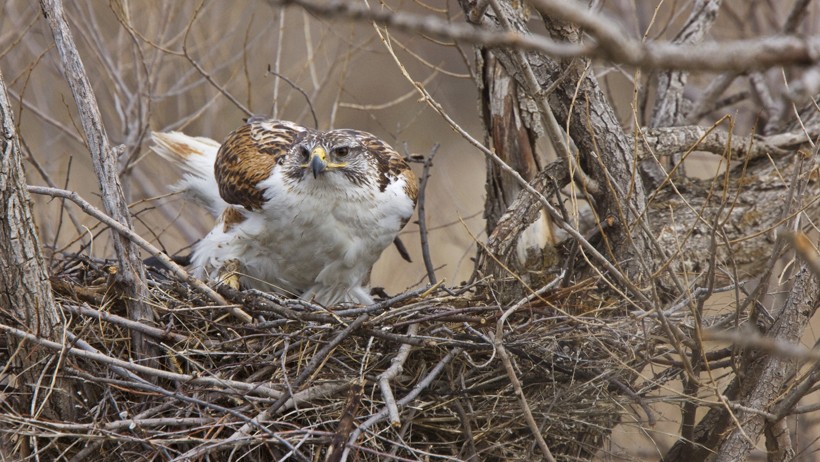
The female does most of the construction work of the nest, Saskatchewan Canada
?
Image credits: Pictureguy/Shutterstock
During this incubation period, both sexes become highly aggressive in nature. They do not tolerate intruders in their territory and can engage in serious fights when the nest is under threat. After the arrival of the nestlings (30-35 days), both male and female take care of feeding turns. Once the eggs hatch, the nestlings depend on their parents for the next 40-50 days until their physical development has been completed.
The nestlings will not leave their nest for the first two weeks of their life. After 16 to 18 days they are capable of jumping and walking, but it will take up to 20 – 35 days before they start wing flapping and first flap-jump exercises. The males are capable of flying when they are approximately 40 days old while the females develop more slowly and start initial flight trials after approximately 50 days. The female hawk stays with the nestlings until they can all hunt independently while the male leaves the nest approximately 40 days after the hatch.
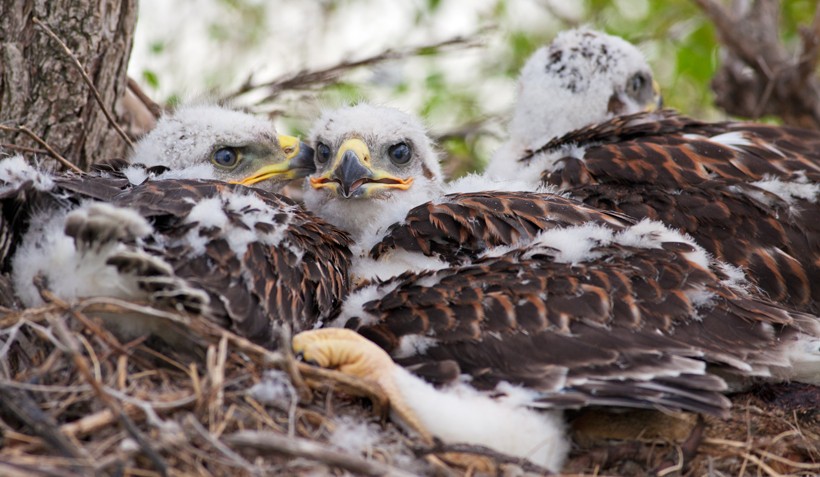
Ferruginous hawks have an average littersize of 3-4 youngs
?
Image credits: Brenda Carson/Shutterstock
Breeding seasons and the number of nestlings vary with respect to climatic conditions and availability of food. Under favorite conditions, ferruginous hawks may live for up to 20 years in the wild. On rare instances, bird watchers have spotted hybrids that are typically a cross-breed of the ferruginous hawk and the red-tailed hawk. The offspring shows physical characteristics of both species. No subspecies of the Buteo regalis have been reported till date.
Behavior and Communication
The Buteo regalis is aggressive in nature and can fiercely attack when threatened. They are one of the largest hawks on earth and can be the size of small eagles. When attacking, the raptor assaults the threat with open talons and uses its sharp claws and beak as its primary weapons. Flight behaviors of hawk mates are communicative while courting. The pair is often seen soaring close to each other and performing aerial cartwheels by interlocking talons.
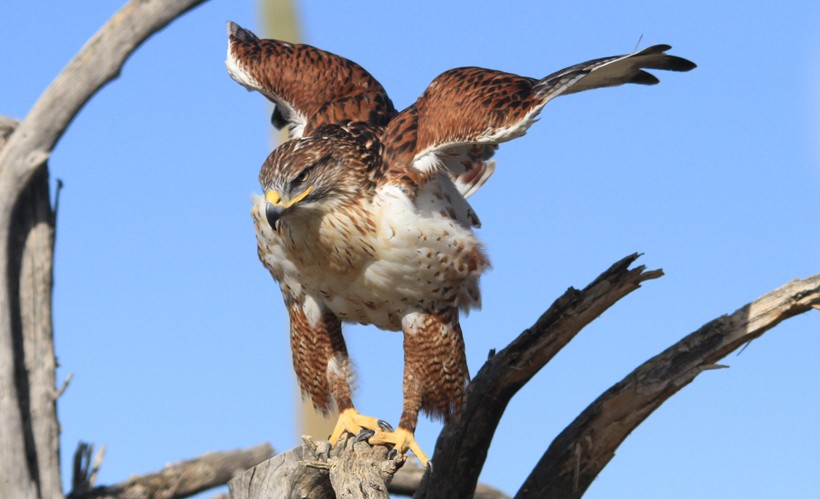
Daily tasks include hunting and patrolling the territory.
?
Image credits: Photos by the Prof/Shutterstock
They prefer a solitary lifestyle and can only be seen in pairs during the breeding season. More activity is observed during the day but the species adapts according to the availability of food and can also hunt at dawn and dusk. Pairs engage in furious fights during the breeding seasons, to protect the nest and their nestlings from danger. Daily tasks include hunting and patrolling the territory. Ferruginous hawks use a 'kaah-kaah' call, in order to communicate with other hawks.
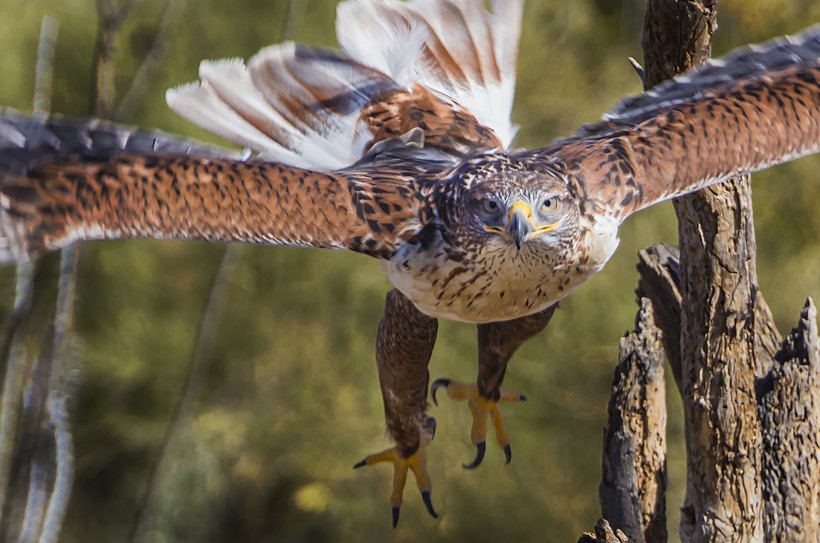
Ferruginous hawk flying, Tucson Arizona
?
Image credits: Nelson Sirlin/Shutterstock
The variety of hunting styles and capability of understanding the habits of its prey, prove that this avian predator is highly opportunistic and adaptable. They also display a great amount of parental care; both parents spend an equal amount of time in nurturing the young, hunting for food and patrolling the territory. Ferruginous hawks found in habitats near human establishments are known to use man-made materials to build the nests. Their hunting and feeding habits also change according to the availability of prey animals. Based on these behaviors, researchers figured out that the ferruginous hawk is a very smart bird that displays exceptional amount intelligence.
Population and Conservation
IUCN rates the Buteo regalis as a species of least concern, as their population is flourishing over an extremely large range of the North American continent. Researchers have found that the population of Buteo regalis has increased by 155% over the last 40 years. Though they are flourishing today, the ferruginous hawks had to fight difficult battles in order to establish present situation. During the 1980’s several states listed the species as threatened and conducted large-scale conservation programs. In some parts of North America, the species was also listed in the past as endangered.
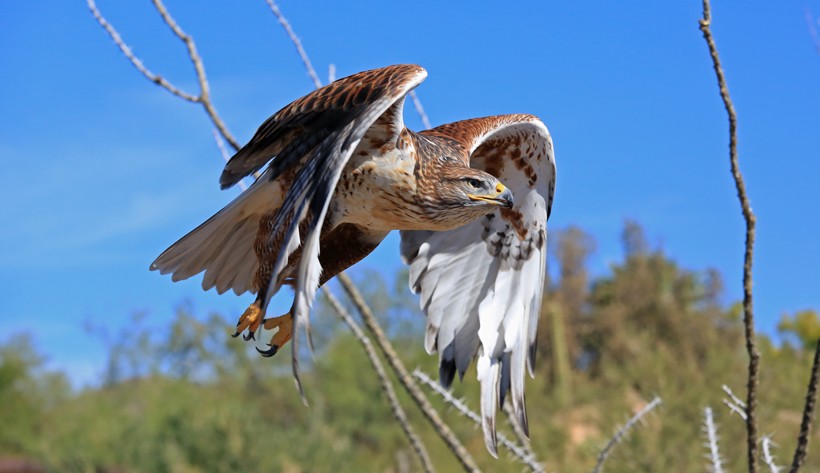
The hawk is rated as least concern, as their population is flourishing over an extremely large range of the North American continent.
?
Image credits: Thomas Barrat/Shutterstock
Ferruginous hawks are rarely killed by other animals. The major threat to its population is the loss of nesting sites due to human occupation. The primary breeding habitat of the Buteo regalis is constantly occupied by farmers; this causes great disturbances in breeding patterns and clutch sizes. Several pairs nest close to each other due to cultivation in grasslands, causing constant conflict amongst pairs.
Despite all the odds, the tough hawk is surviving the wild-west and is increasing in numbers.
Evolution
Evolutionary history of the ferruginous hawks and all other birds is quite prehistoric. As fossil records provide solid evidence of their relation to dinosaurs, birds are often referred to as “living dinosaurs”, by modern researchers. The evidence indicating the evolution of all modern birds were first found in fossil records of Theropods. Theropoda is a suborder consisting of dinosaurs; the widely known tyrannosaurus rex is the largest theropod ever discovered. Theropod dinosaurs were the first animals to possess feather-like structures on their body. Fossils show that their body was covered with feather-like hairs and some smaller animals could have been able to glide for short distances. The standing posture of these prehistoric creatures was also quite similar to that of modern birds.
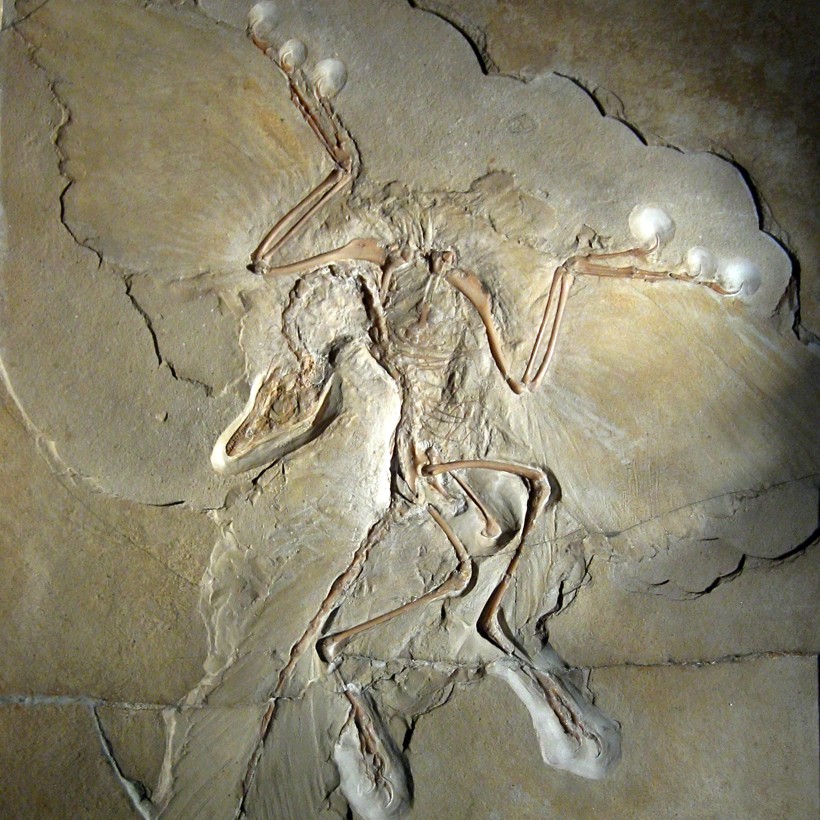
Archaeopteryx, the link between dinosaurs and birds
?
Image credits: H. Raab/CC BY-SA 3.0, Original image
Archaeopteryx, a small Theropod dinosaur that lived on earth approximately 150 million years ago, proved to be the missing link of evolution between dinosaurs and birds. The archaeopteryx was quite different from modern birds, but the species provided information on how birds developed feathers and flight. The archaeopteryx had teeth and claws just like other dinosaurs, but weighed only a kilogram and possessed feathers on its forelimbs and tail. Just like rough-legged raptors, the archaeopteryx had feathers on its legs as well. Unlike modern birds, the feathers were asymmetrical and might have made it impossible for the dinosaur to attain flight. A possible speculation is that the archaeopteryx might have used the feathers to glide for short distances instead of flying.
Though modern birds are not very closely related to the Theropod dinosaurs, the Theropods provided vital information about the evolution of birds. Most birds of today might have evolved from the Archaeopteryx or some other dinosaur of similar size and physical features. The first birds appeared only 100 million years ago. When the dinosaurs were facing extinction, birds survived due to their ability of flight. It is speculated that during the Cretaceous-Palaeogene extinction event, birds in South America survived and later on spread to other the continents of the world.
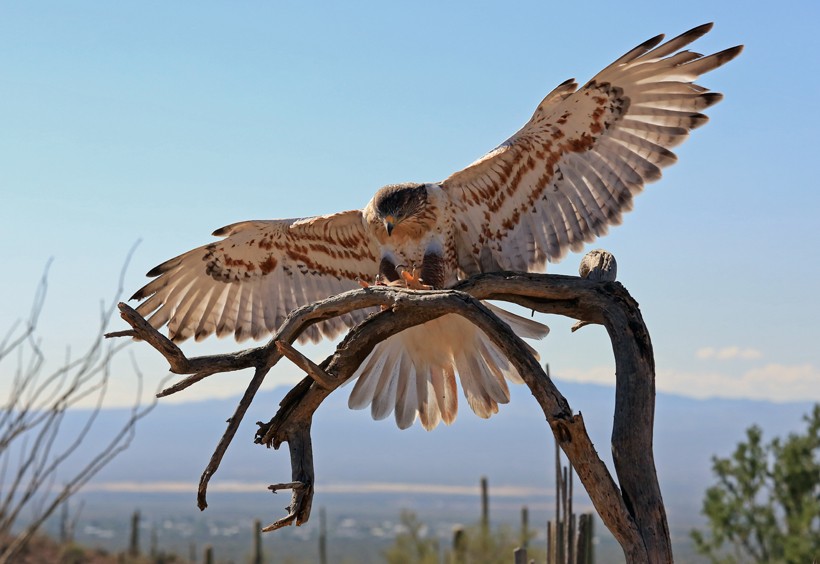
Just like rough-legged raptors, the archaeopteryx had feathers on its legs as well.
?
Image credits: Thomas Barrat/Shutterstock
Funfacts
- Ferruginous hawks are the heaviest of all hawks. The upland buzzard of Asia is the only hawk that averages higher than the ferruginous hawk in terms of length and wingspan, but the ferruginous hawk is heavier.
- Ferruginous hawks mate for life. The same pair nests every year, till one of them meets death.
- Both male and female take turns while building the nest and take care for their nestlings.
- Due to their size, they are often mistaken for small eagles.
- “Ferruginous” means “related to iron or rust”. The bird got this name due to its rusty feathers.
- The Rough-legged hawk and the ferruginous hawk are the only two species of hawks that have feathers on their legs.
- The large Golden Eagle is the only bird with a reputation of being a ferruginous hawk predator; for other flying potential predators, the hawk is simply too large and strong.

